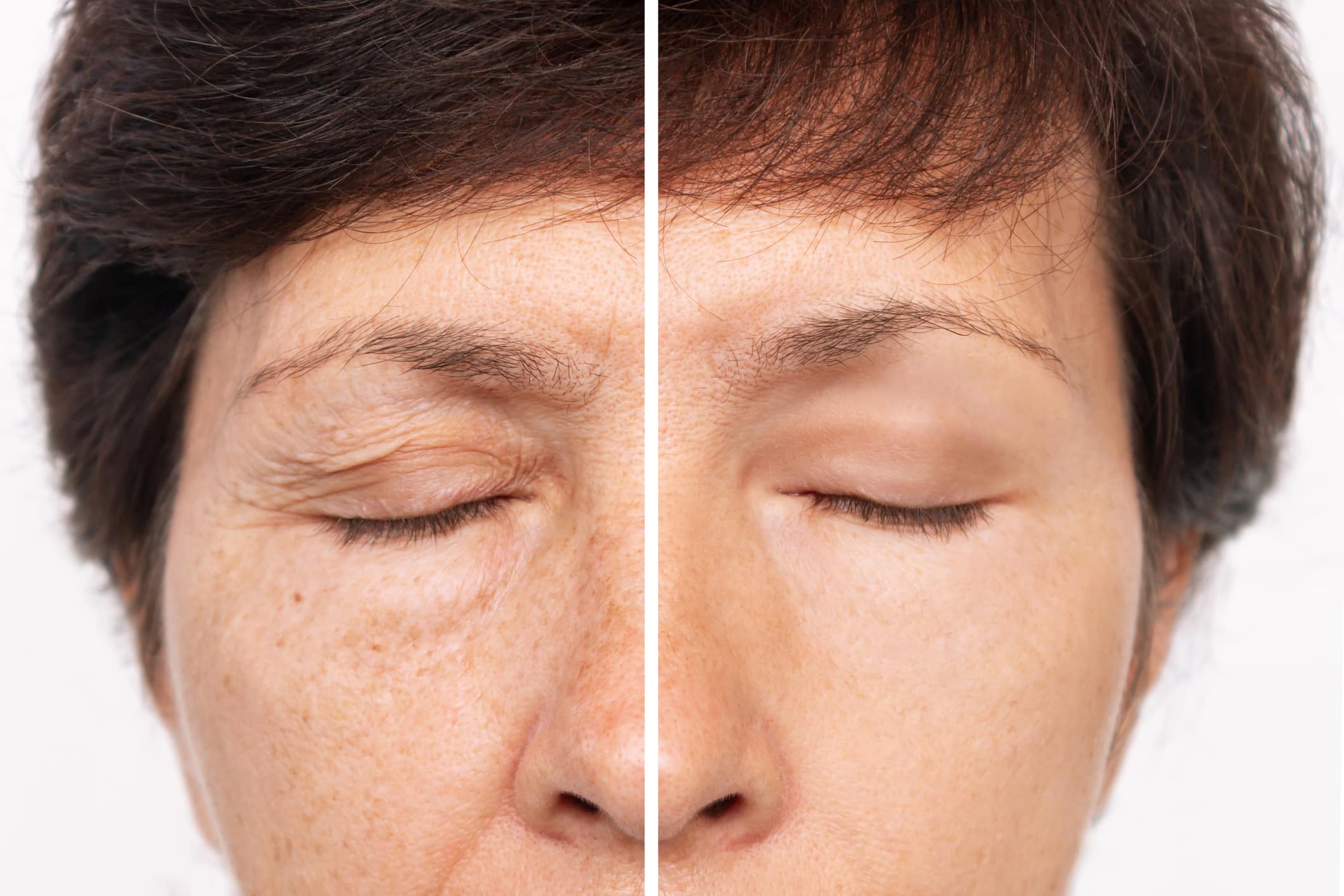
Led by Dr. Paul Johnson, MD, one of Southern Pennsylviania’s most highly regarded oculoplastic surgeons, Chesen Laser Eye Center offers patients an extensive range of cosmetic, corrective and reconstructive surgery of the eyelids and surrounding areas.
Whether a patient is seeking medical or cosmetic services, Dr. Johnson and our team address each person’s particular needs and strive to achieve a natural, harmonious look to complement one’s unique features. Because of the specialized function and anatomy of the orbital area, it is essential to have a skilled oculoplastic surgeon perform these services.
Oculoplastic surgery is a highly specialized field that encompasses cosmetic and reconstructive surgery of the eyelids and surrounding areas. It includes a wide range of aesthetic and medical services, such as surgery of the upper and lower eyelids, eyebrows, and orbital areas (including tear duct surgery, thyroid eye disease, orbital fractures and tumors). It also encompasses facial rejuvenation procedures such as Botox®, facial fillers and various skincare treatments. Whether a patient is seeking medical or cosmetic services, our goal is to address each person’s particular needs while simultaneously achieving a natural, harmonious look to complement each individual’s features. Because of the unique function and anatomy of the orbital area, it is essential to have a skilled oculoplastic surgeon perform these services.

Ptosis is the drooping of the upper eyelid to the extent it partially covers the pupil. It can affect one or both eyes. As we age, the muscles that hold up our eyelids weaken or loosen and can cause our lids to droop. This results in a tired, sleepy appearance and reduces peripheral vision. Some people experience brow or forehead aches and fatigue at the end of the day from constantly raising their brows to see. Ptosis may also be caused by an injury, birth defect or neurological disorder and is seen in both adults and children. Surgical repair helps improve vision and provides a more vibrant appearance. There are various surgical approaches to address ptosis including an external approach, an internal approach, and even the use of suspension slings in very severe cases. Ptosis surgery is very delicate and requires a thorough understanding of the anatomy and function of the muscle.
Eyelid cancers are usually painless, but can slowly grow and destroy the normal architecture of the lid. They are typically raised and slowly grow, can be light or dark in color, can cause loss of eyelashes, ulcerate and sometimes bleed. Early detection is critical before the damage becomes devastating. Proper excision and meticulous repair ensures eyelid function remains intact. It is important to have any suspicious lesion on or around the eyelid evaluated by an oculoplastic surgeon. If a biopsy proves cancerous, typically Dr. Johnson recommends excision of the cancer so the margins around it are clear. This is followed by reconstruction of the eyelid to achieve proper function and aesthetics. Often Dr. Johnson works with Mohs surgeons, specialized dermatologists who remove skin cancers by carefully clearing the margins, followed by his surgical repair of the area. This will be discussed at length at the consultation so that all questions are answered and a thorough understanding is achieved.
Entropion, a condition in which the lower eyelid turns inward, can cause eye irritation and result in excessive tearing, crusting, mucous discharge and even vision loss. Although most commonly the result of aging and the weakening of the eyelid muscles, entropion may also be caused by a birth defect, eye injury, scarring or tumors.
Patients whose eyelids turn inward can undergo an outpatient surgical procedure to tighten the eyelid and return it to its normal position. For those cases where surgery is not an option, the condition is treated with lubricating drops, ointments and temporary sutures. Since entropion can cause damage to the outer part of the eye, known as the cornea, we strongly suggest an evaluation with our oculoplastic surgeon, Dr. Johnson.
Ectropion, a condition in which the lower eyelid turns outward, can cause eye irritation and result in excessive tearing, crusting and mucous discharge. Although most commonly the result of aging and the weakening of the eyelid muscles, ectropion may also be caused by a birth defect, eye injury, scarring or skin cancers. An outpatient surgical procedure can be performed to tighten the eyelid and return it to its normal position. To prevent dryness of the cornea, artificial tears and ointments may be prescribed to help keep the eyes lubricated. Since ectropion can cause damage to the outer part of the eye, known as the cornea, we strongly suggest an evaluation with our oculoplastic surgeon, Dr. Johnson.
Thyroid eye disease usually occurs as a result of Graves disease, or hyperthyroidism, but it can also affect hypothyroid or euthyroid patients. Infiltration of the muscles and tissues surrounding the eye can cause poor eye movement, proptosis (bulging of the eyes), malpositioned eyelids and sometimes vision loss. The most common sign of thyroid eye disease is eyelid retraction. Management of patients with this disease is often multidisciplinary and includes endocrinologists, internists, strabismus surgeons, ophthalmologists and oculoplastic surgeons. Patients experiencing severe sight-threatening progression of the disease often require high-dose steroid treatment, radiation therapy or surgery to decompress the eye and preserve sight. Patients may also require surgery to straighten the muscles that move the eye and eyelid. A new medication, TEPEZZA®, is now available to improve the signs and symptoms of Thyroid Eye Disease.
The first step is scheduling your FREE consultation with Dr. Johnson. Call us today at (610) 372-2222 to schedule or learn more!